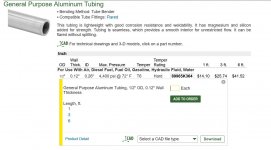Just a Sparky
Hot Rolled
- Joined
- May 2, 2020
- Location
- Minnesota
Just doing some brainstorming for an upcoming project.
I will need to drill a 1/4" blind hole 12" deep into a length of 1/2" O.D. aluminum round bar for a fluid passage. I've heard a little about gun drills, but my understanding is that those rely on high pressure coolant injection for chip removal. I will be doing this operation on a 13" South Bend toolroom lathe not rigged for coolant.
Is it possible to get a nice straight hole that depth with a progression of twist drills? Are 1/4" twist drills available with flutes that long? Or am I going to have to peck in 1/16th increments?
Suggestions welcome.
I will need to drill a 1/4" blind hole 12" deep into a length of 1/2" O.D. aluminum round bar for a fluid passage. I've heard a little about gun drills, but my understanding is that those rely on high pressure coolant injection for chip removal. I will be doing this operation on a 13" South Bend toolroom lathe not rigged for coolant.
Is it possible to get a nice straight hole that depth with a progression of twist drills? Are 1/4" twist drills available with flutes that long? Or am I going to have to peck in 1/16th increments?
Suggestions welcome.



